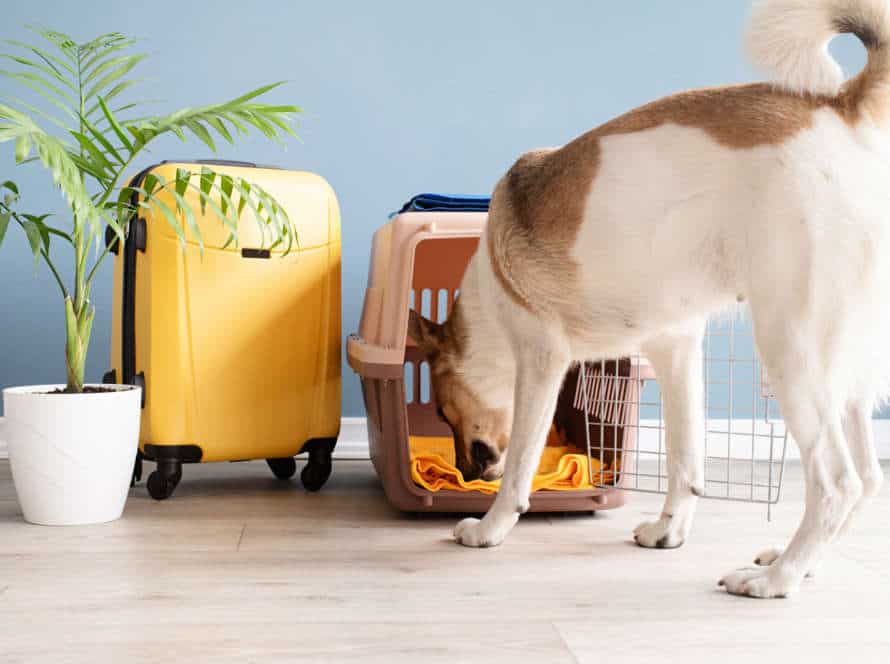How to Transition from Treats to Verbal Praise for the Come Command
To transition from using treats to verbal praise for “come” commands, gradually decrease treats and increase verbal praise.
Use verbal cues like “good dog” or “well done” when your pup comes, with no expectation for a treat.
Be enthusiastic with tone, body language and show you are happy.
Over time, replace treats with verbal praise and other positive reinforcements.
Pro tip: Make a strong bond with your furry friend by combining praise, playtime and physical touch.
Why transition from treats to verbal praise?
Treats can be a great motivator for teaching your pup the basics of obedience, like the come command. But, it’s important to transition away. Move toward verbal praise instead.
The benefits of this?
- Reinforcing the idea that the pup should come when called
- Building trust and respect between you and the pup
- Providing the pup with faster reinforcement
Why is transitioning from treats to verbal praise beneficial? Let’s take a look.
Benefits of verbal praise over treats
Ditching treats for verbal praise is a better way to reward your pup. It’s always available, unlike treats! No extra calories and no need to use food as a reward.
Plus, this training method strengthens the bond between you and your pup. It teaches them to look to you for guidance and approval. Obeying is the right thing to do and should be expected.
To transition:
- Gradually reduce treats and increase verbal praise.
- Start phasing out the treats and spacing out the verbal praise.
- Your pup will soon respond as well to praise as treats.
Pro tip: Use a soft, happy tone when praising. Get excited and let your pup know you’re proud of them!
How treats can become a crutch for the ‘come’ command
Using treats as a reward for the “come” command can be useful – but transitioning from treats to verbal praise will help your pup understand better. Here’s how:
- Gradually reduce the number of treats, replace them with happy words like “good girl/boy“.
- Reward your pup with treats occasionally, but randomly.
- Once they respond promptly & reliably without treats – eliminate using treats entirely.
- Verbal praise consistently reinforces good behavior & encourages obedience.
- Remember to use an upbeat, happy tone of voice to make verbal praise more effective.
Importance of training a reliable recall without treats
Training your pup to reliably come when called, without treats, is essential. Relying too much on treats can lead to them becoming unresponsive. Here are some tips to transition:
- Gradually reduce treats & replace them with verbal praise & petting.
- Practice the ‘come’ command in a familiar, distraction-free space. Then, increase levels of distraction as confidence develops.
- Use an upbeat voice & be consistent with commands & rewards.
- Avoid negative reinforcement & punishment – this can cause fear & anxiety, leading to your pup not obeying.
Pro tip: Reliability takes time & practice, so stay patient & persistent when training!
Steps for transitioning from treats to verbal praise
The Come Command is necessary for your pup’s training. It’s important they learn to obey even without treats. Treats can help motivate while they learn, but then you must move away from treats to verbal praise. In this article, we’ll go over the steps to do this.
Start by reducing frequency of treats
Giving treats to your pup is a great way to celebrate their good behaviour. But it’s important to transition from treats to verbal praise gradually. Here are some tips:
- Start by reducing how often treats are given. When your dog has mastered the “come” command, give fewer rewards and more verbal praise.
- Gradually change treats for praise. Use phrases like “good boy” or “good girl” instead of a treat every once in a while. Over time, your dog will respond better to praise than treats.
- Still give occasional treats. Keep your pup motivated by giving treats occasionally as a reward.
- Be consistent with praise. Consistency is key, so make sure to give verbal praise each time you call your dog to come.
With patience and consistency, your pup will learn to react to verbal praise alone and you can stop giving treats altogether.
Utilize intermittent reinforcement
Intermittent reinforcement is a great way to move from treats to verbal praise when teaching your pet the ‘come’ command. Here are the steps:
- Start by giving treats often, to reward your pet’s behavior.
- After a few weeks, give treats less often.
- At the same time, say “good boy” or “great job” along with the treats.
- Gradually increase verbal praise and lower treats as the pet learns the command.
- Finally, you won’t need treats, just verbal praise to encourage good behavior.
Replace treats with verbal praise and physical rewards
Transitioning to verbal praise for “Come” requires patience and consistency. Here are steps to make it smooth:
- Start by using verbal command with a treat when calling the dog.
- Gradually reduce treats, replacing them with verbal praise, in a happy tone.
- Give physical affection, like pets and hugs, when dog responds correctly.
- Remember to reward them with verbal praise and physical affection.
- Be consistent and practice daily. Pro tip: Use body language too! Praise from the heart.
Best practices for using verbal praise effectively
Verbal praise is a great way to encourage good doggy behaviour. But, transitioning from treats to verbal praise can be tricky. How do you make sure your pup understands the connection? Here are some tips for using verbal praise effectively:
Timing of praise and rewards
For effective verbal praise, timing is key. Here’s how to make it work:
- Praise On Time: Say something as soon as your pup does the right thing. Timing is essential.
- Consistent Voice Tone: Use a special tone of voice to show you approve of the behavior.
- Reinforce Good Habits: Praise more when your pup does it without prompting. This reinforces their good habits.
- Keep It Simple: Use one meaningful word like “good” or “yes” to reinforce the behavior.
By following these tips, you can transition from treats to verbal praise. Pro Tip: Remember that dogs need consistency and positive reinforcement. Use verbal praise regularly to make sure your pup understands the desired behavior.
Maintaining consistency across commands and family members
For consistent results with the “come” command, here’s some best practices to keep in mind:
- Stick to one cue: Always use the same verbal cue like “come” or “here”. This helps your pet to understand the command.
- Positive tone: Use an upbeat and cheerful tone. When your pet comes to you, use an even happier tone as a reward.
- Praise: When your pet comes, offer verbal praise in the same tone and phrasing to reinforce the behavior.
- Train everyone in the house: Make sure everyone uses the same verbal cue, tone, and phrase.
This way, you can transition from treats to verbal praise for the “come” command without any confusion. Plus, don’t forget to occasionally give treats too! Verbal praise and treats will make your pet feel loved and more likely to respond to the “come” command.
Personalizing verbal praise for your dog’s unique personality and preferences.
Personalize verbal praise for your pup to reinforce good behaviour and create a strong bond. Tailor it to their unique personality and preferences.
Here’s how to transition from treats to verbal praise for the come command:
- Use an energized, playful tone of voice.
- Try different types of praise – high-pitched “good boy/girl”, pat on the head or back, or belly rubs.
- Include your pup’s name and be specific about the behaviour you’re praising – “Buddy, that was an excellent recall”.
- Observe their body language and respond accordingly – if they prefer physical touch over verbal praise, focus on petting and cuddling them.
- Experiment with different types of praise to see what works best.
Frequently Asked Questions
Q: Why should I transition from treats to verbal praise for the come command?
A: There are several reasons why you should transition from treats to verbal praise for the come command. First, treats can be expensive and may not always be available. Second, your dog may become reliant on treats and refuse to comply without them. Third, verbal praise is a more natural way to communicate with your dog and can strengthen your bond.
Q: How do I start the transition from treats to verbal praise?
A: Begin by pairing the verbal cue, such as “come,” with the treat. Once your dog reliably responds to the cue, gradually decrease the frequency and size of the treats and substitute them with verbal praise. Be consistent and patient, and always reward your dog’s good behavior.
Q: Can I still use treats occasionally after the transition to verbal praise?
A: Yes, you can still use treats occasionally as a special reward or for particularly challenging situations. Just make sure not to rely on them too often, as this can hinder your dog’s training progress.
Q: What if my dog doesn’t respond to verbal praise?
A: If your dog doesn’t respond to verbal praise, it may take some time and extra effort to train them to do so. Use a high-pitched, enthusiastic tone of voice, and be consistent with your praise. You can also try incorporating other types of rewards, such as playtime or a favorite toy.
Q: How long does it take to fully transition from treats to verbal praise?
A: Every dog is different, so there’s no set timeframe for the transition from treats to verbal praise. It largely depends on your dog’s temperament, training background, and the consistency of your training. However, with patience and persistence, most dogs can learn to respond reliably to verbal praise within a few weeks to a few months.







